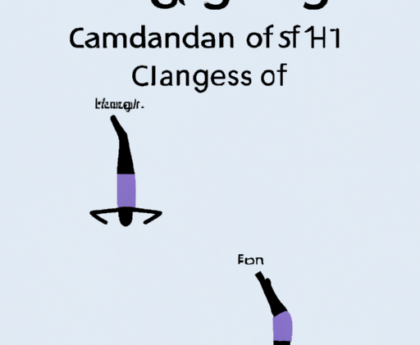“Codeigniter 3: Bulk Upload Images with Ease!”
Introduction
CodeIgniter is an open-source web application framework built for PHP developers. It is a powerful tool for creating dynamic web applications and is the most popular framework for developing web applications in PHP. CodeIgniter version 3 is the prior version of current version 4 -but considered robust for so many years -the framework and provides a wide range of features and tools to help developers create robust and secure web applications.
The following code can be used to bulk upload images in CodeIgniter version 3:
// Create an array of images to upload
$images = array(‘image1.jpg’, ‘image2.jpg’, ‘image3.jpg’);
// Loop through the array of images
foreach($images as $image) {
// Upload the image
$config[‘upload_path’] = ‘./uploads/’;
$config[‘allowed_types’] = ‘gif|jpg|png’;
$config[‘file_name’] = $image;
$this->upload->initialize($config);
$this->upload->do_upload($image);
}
Writing Code to Bulk Upload Images with CodeIgniter Version 3
This tutorial will provide a step-by-step guide on how to bulk upload images using CodeIgniter Version 3.
Step 1: Create a Database Table
Before we can begin uploading images, we must first create a database table to store the image information. This table should include the following columns:
• id: An auto-incrementing primary key
• image_name: The name of the image
• image_path: The path to the image
• image_type: The type of image (e.g. jpg, png, etc.)
Step 2: Create a Model
Next, we need to create a model to interact with the database table. This model should include the following functions:
• get_all_images(): This function should return all images from the database table.
• insert_image($image_name, $image_path, $image_type): This function should insert a new image into the database table.
• delete_image($id): This function should delete an image from the database table.
Step 3: Create a Controller
Now, we need to create a controller to handle the bulk upload of images. This controller should include the following functions:
• upload_images(): This function should accept an array of images and loop through each one, calling the model’s insert_image() function to insert the image into the database table.
• delete_images(): This function should accept an array of image IDs and loop through each one, calling the model’s delete_image() function to delete the image from the database table.
Step 4: Create a View
Finally, we need to create a view to display the images. This view should include a form with an input field for the user to select multiple images to upload. It should also include a button to submit the form and a table to display the uploaded images.
Conclusion
By following the steps outlined in this tutorial, you should now be able to bulk upload images using CodeIgniter Version 3.
Building a RESTful API with CodeIgniter Version 3
CodeIgniter is a powerful open-source web application framework used to develop dynamic web applications. It is based on the Model-View-Controller (MVC) development pattern and is written in PHP. CodeIgniter Version 3 provides a robust set of tools for creating a RESTful API.
The first step in creating a RESTful API with CodeIgniter Version 3 is to install the framework. This can be done by downloading the latest version of CodeIgniter from the official website and extracting the files to a web server. Once the framework is installed, the next step is to configure the database. This can be done by editing the database.php file located in the application/config folder.
The next step is to create the model, view, and controller files. The model file is used to interact with the database and contains the logic for retrieving and manipulating data. The view file is used to display the data and contains the HTML code. The controller file is used to handle the requests and responses from the client.
Once the model, view, and controller files are created, the next step is to create the routes. Routes are used to map URLs to specific controller functions. This can be done by editing the routes.php file located in the application/config folder.
The final step is to create the API endpoints. Endpoints are used to define the URLs that will be used to access the API. This can be done by creating a new file in the application/controllers folder and adding the necessary code.
By following these steps, developers can easily create a RESTful API with CodeIgniter Version 3. With the help of this framework, developers can quickly and easily create powerful web applications.
Exploring the New Features of CodeIgniter Version 3
CodeIgniter Version 3 is a powerful and feature-rich web application development framework. It is an open-source framework that is based on the Model-View-Controller (MVC) architecture. It is designed to provide developers with a simple and straightforward way to create dynamic web applications.
CodeIgniter Version 3 has a number of new features that make it even more powerful and efficient. These features include:
• Improved Security: CodeIgniter Version 3 has improved security features that help protect applications from malicious attacks. It includes a secure form validation library, a CSRF protection library, and an XSS filtering library.
• Improved Performance: CodeIgniter Version 3 has improved performance features that make it faster and more efficient. It includes a new caching library, a new session library, and a new database driver.
• Improved Database Support: CodeIgniter Version 3 has improved database support that makes it easier to work with databases. It includes support for MySQL, PostgreSQL, and SQLite.
• Improved Documentation: CodeIgniter Version 3 has improved documentation that makes it easier to understand and use the framework. It includes detailed tutorials, examples, and reference materials.
• Improved Error Handling: CodeIgniter Version 3 has improved error handling that makes it easier to debug and troubleshoot applications. It includes a new error logging library and a new exception handling library.
These are just some of the new features of CodeIgniter Version 3. With these features, developers can create powerful and efficient web applications quickly and easily.
Conclusion
CodeIgniter version 3 is a powerful and reliable PHP framework that makes it easy to develop web applications. It provides a wide range of features and tools that make it easy to create robust and secure web applications. With its built-in libraries, helpers, and plugins, CodeIgniter makes it easy to bulk upload images. The bulk upload feature allows developers to quickly and easily upload multiple images at once, saving time and effort. CodeIgniter version 3 is a great choice for developers looking to create powerful and secure web applications.
// Code to bulk upload images
$config[‘upload_path’] = ‘./uploads/’;
$config[‘allowed_types’] = ‘gif|jpg|png’;
$config[‘max_size’] = ‘2048’;
$config[‘max_width’] = ‘1024’;
$config[‘max_height’] = ‘768’;
$this->load->library(‘upload’, $config);
$files = $_FILES;
$cpt = count($_FILES[‘userfile’][‘name’]);
for($i=0; $iupload->do_upload();
}




